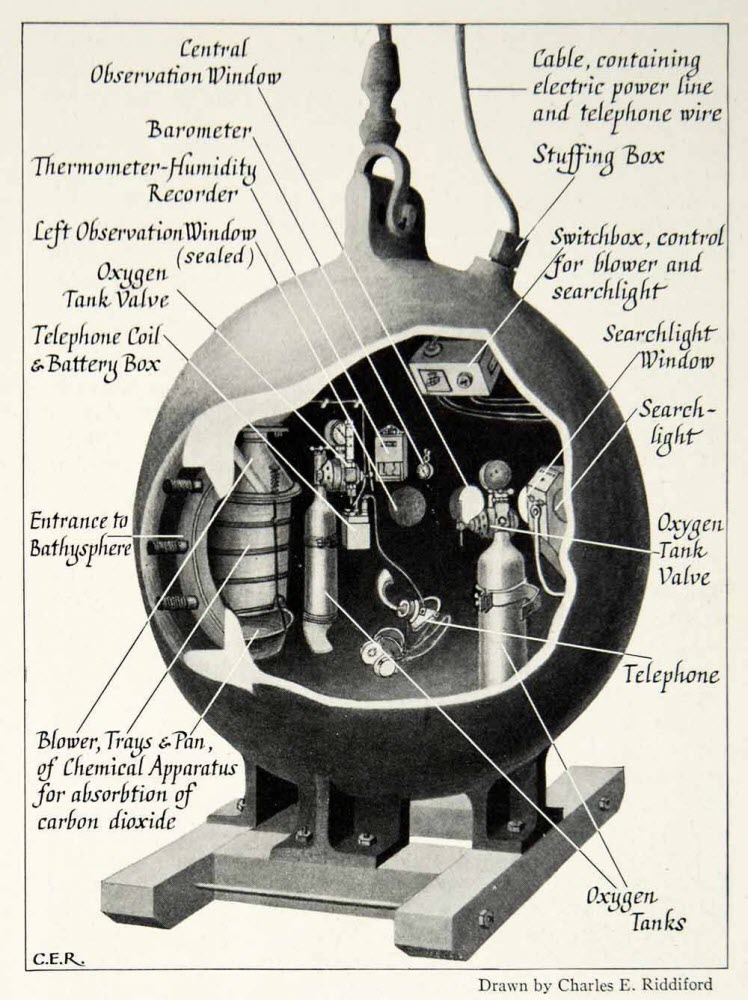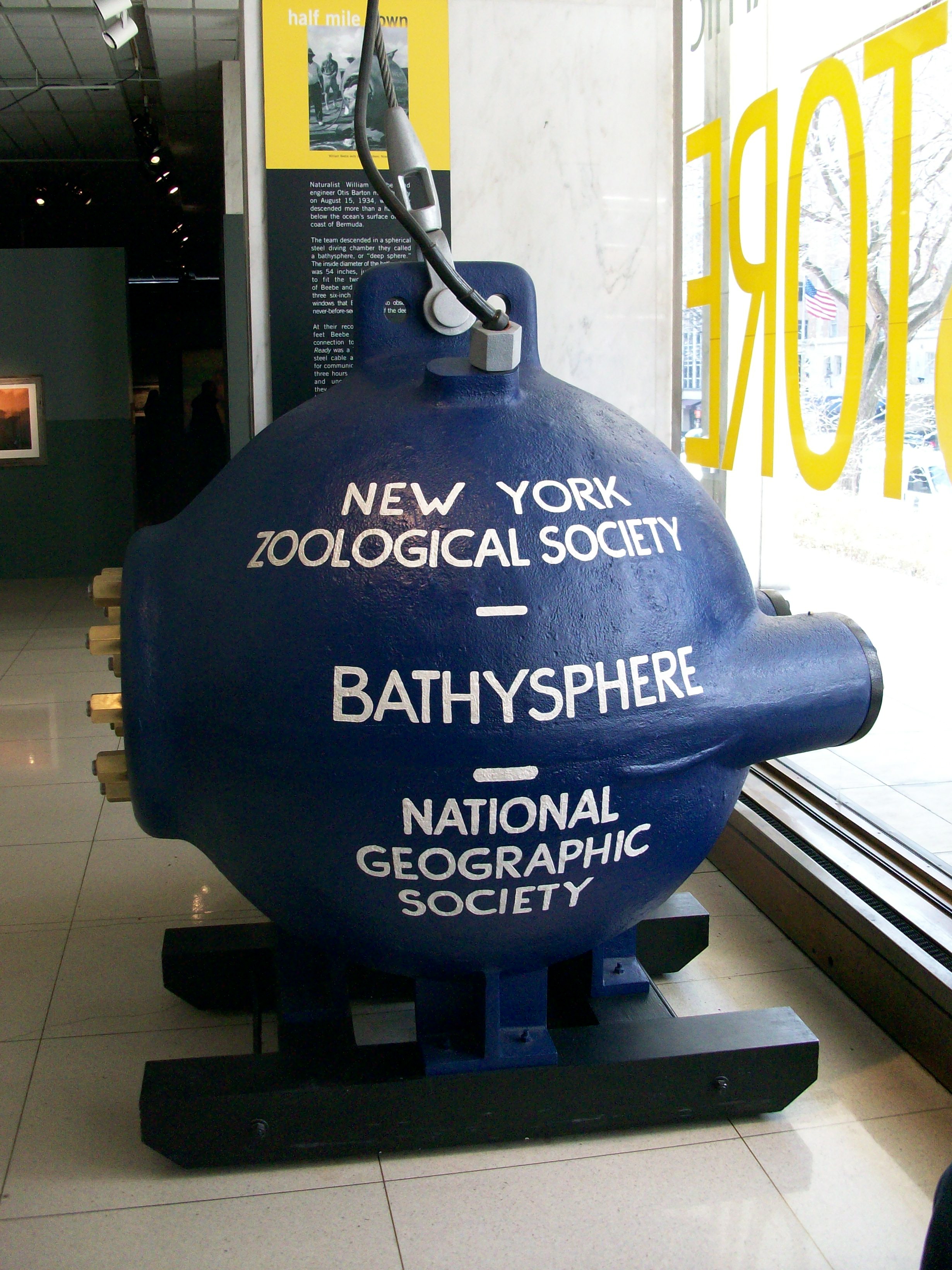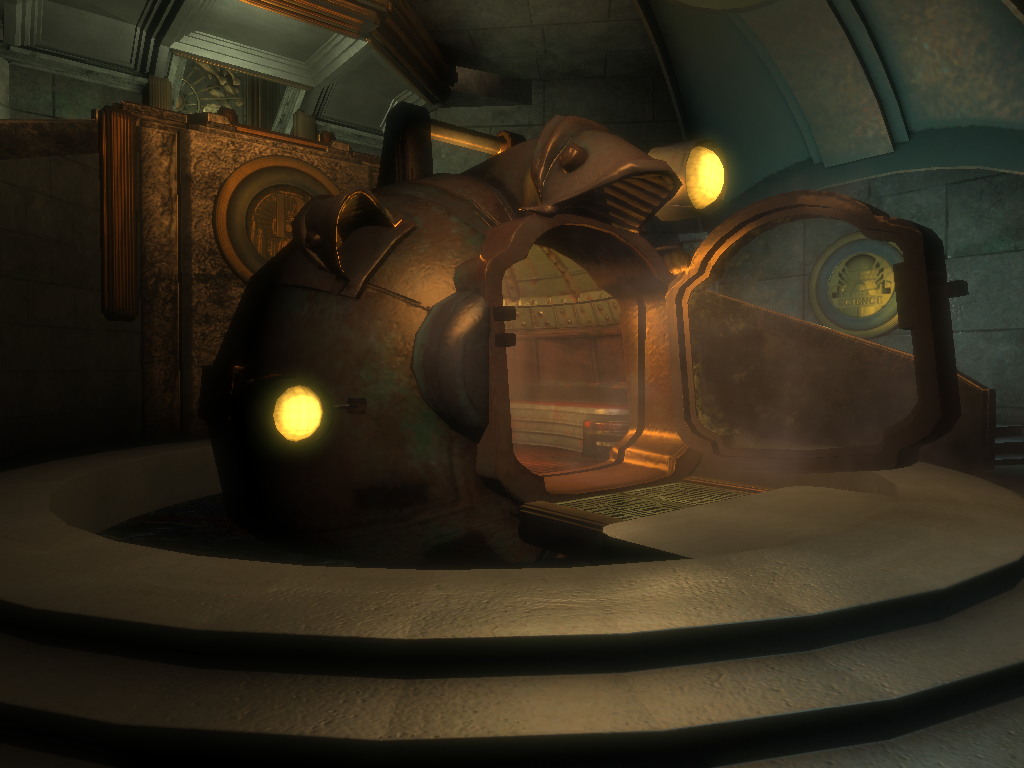
The Bathysphere
In our previous exploration on the death spirals of army ants, we met the enigmatic William Beebe, ornithologist, entomologist, ichthyologist, and conservationist. Beebe pioneered a holistic approach to ecology. In order to understand a place in totality, one must study the place in totality.
Having practiced this method multiple times in the jungle, Beebe wanted to apply it to the seas. The British government permitted him to establish a research station on Nonsuch Island in Bermuda. From there, Beebe craved to study the inhabitants of an eight-square-mile region of the ocean, from its surface to points two miles below. The reader does not require the writer to impart how large an undertaking that objective is, but here you go: that undertaking is a behemoth! Or a Kraken.
Other than the enormity of the task, Beebe faced another dilemma. Diving in the 1920s relied on helmets, the types you might imagine from a Jules Verne novel. Submarines of the era had only descended to 383 feet and they had no windows. The deepest a human had been below the sea was 525 feet, wearing a suit of armor. Two miles is 10,560 feet. If Beebe wanted to know the ocean intimately, he would need new technology.

Beebe wrote articles about a cylindrical device that might take him to the depths he needed. An engineer named Otis Barton read the initial plans and realized Beebe would sign his death warrant if he attempted to use such a machine. The pressure of the ocean would crush a cylinder easily. Barton knew such an endeavor required a spherical vessel. He wrote to Beebe, in hopes of joining him in creating and utilizing such a vehicle.
But Beebe had received countless messages from people attempting to give him advice. Most were rubbish, so Barton initially found himself ignored. However, a mutual friend managed to secure Barton a meeting with Beebe. During the meeting, Barton learned he had an ace up his sleeve he never knew he had. Years earlier, a good friend of Beebe’s – Theodore Roosevelt – had proposed a similar, spherical model. One does not simply turn down the ideas of Teddy Roosevelt! Beebe approved of Barton’s idea and the two embarked upon a partnership.
The result was the Bathysphere.

Bathy (Greek prefix meaning “deep”) + sphere (from the Greek sphaira, meaning…sphere!) = Deep Sphere
This contraption is an engineering marvel, especially for the 1920s.
The casing was made of steel, which was connected to a cord that could raise and lower it. Three 3-inch openings provided windows, though one was usually plugged. Barton used fused quartz for the windows, which was the strongest transparent material available at the time. A 400-pound hatch provided entry and egress, which needed to be bolted shut during usage. Initially, oxygen for trips came from cylinders inside the vessel.
How would they keep from going Apollo 13 and suffocating from expelled carbon dioxide? I’m glad you asked because the answer is insane. They mounted pans of soda-lime and calcium chloride on the walls, compounds that can absorb CO2 and moisture. The inhabitants needed to manually use palm-leaf fans to move the gases over these pans in order for the process to work. Picture two humans inside that ball, using leaves to fan out their own exhalations, while trying to peer into the abyss in the name of science.
A few niceties did enhance their trips, however. General Electric provided a lamp and Bell Laboratories contributed a telephone system, both of which were powered by cables inside rubber hoses that ran alongside the main support cabling.

After several uncrewed test dives, Beebe and Barton took to the depths for the first time in the Bathysphere on 6 June 1930. The first several months of usage yielded immediate payoff. Beebe documented numerous deep-sea creatures which had never been witnessed in their natural habitat. They became the first humans to see how the sea filters some frequencies of sunlight as one descends; deep enough and only blue and violet persist.
From 1930 to 1934, Beebe and Barton employed the Batyshphere to probe the ocean off Bermuda’s shores. They discovered new species aplenty. They set records for humanity’s deepest dives. On 15 August 1934, they sank to 3,028 feet, which fulfilled a promise Beebe made to National Geographic to reach the half-mile mark. That point was the lowest humans had been and remained the record until 1949, when Barton broke it in a spiritual successor to the Bathysphere, called the Benthoscope.
The exploration was a popular sensation, as well. On 22 September 1932, thanks to the telephone technology, Beebe and Barton broadcasted a live dive via radio to a nationwide audience on NBC. Barton also operated a camera inside the orb, hoping to create a motion picture. He later produced a drama, called Titans of the Deep.
Gobsmacking that we have video footage of the Bathysphere!
Just like the diving helmets before it, the Bathysphere eventually found itself surpassed technologically and humanity increased its ability to research the dark ocean. But its spot in the annals of exploration is hardly exceeded. Beebe’s vision and Barton’s design melded into the space capsule of the downward voyage, decades before we sent people upward. The Bathysphere led to countless advances and sparked the careers of many scientists.
It also captured the imagination of non-tangible creatives. To reach the city of Rapture in the acclaimed video game series BioShock, the intrepid voyager hops in a bathysphere!
Incredibly, you can visit the Bathysphere at the New York Aquarium in Coney Island, where it rests on a sea-throne of glory!


Further Reading and Exploration
Bathysphere – The Official William Beebe Website
A ROUND TRIP TO DAVY JONES’S LOCKER – National Geographic
Bolted inside a steel sphere deep underwater, these explorers made history – National Geographic
Bathysphere: The World’s First Deep-Sea Exploration Vessel – Amusing Planet
Three Hundred Fathoms Beneath the Sea – Popular Mechanics article from 1931














Pingback: The Unsilent Spring – themountainsarecalling.earth
Pingback: Tetrapteryx – themountainsarecalling.earth